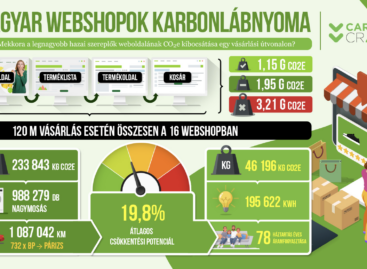GKI analysis: Earnings – how much is too much?
One of the most common questions in recent months is why, despite the extremely high real wage level, Hungarian consumption is not expanding faster? According to the Minister of Economy, people are characterized by a cautious motive and a high savings rate. However, in addition to these processes, it is also worth considering how the average wage increase is distributed among employee.
In 2020, 33% of full-time employees (3 million people) had their real earnings decrease, meaning that their nominal wage increase did not reach the increase in inflation. This value was 45% in 2021, 40% in 2022, and then 57% in 2023, meaning that more than every second employee had their real earnings decrease. This is one of the reasons why consumption decreased last year. This process is also linked to the increase in household loans for the purchase of goods and other consumer loans: in 2020 there were “only” 497 thousand such loan agreements, while in 2024 there were already 643 thousand, and the loan amount also increased significantly. By June this year, “only” 19% of the observed employed population had their real earnings decrease, but this ratio is still large enough to slow down the growth of consumption.
Furthermore, it must be taken into account that high-income earners will spend an increasingly smaller part of the increasing real earnings on further (domestic) consumption. In addition, the data does not reveal how many people actually had their real earnings continuously increase during the period under review (e.g. it happens that the real earnings of the worker increased in one year and decreased in the next), while they are the stable consumers. It would also be useful to know the development of the earnings of the missing 1.5 million employed people.
The growth of earnings and the official methods of calculating them are interesting in themselves. The average earnings of full-time employees were HUF 571,000 in 2023, which is about HUF 50,000 higher than the ratio of total household earnings to the number of employees (KSH national accounts data). The latter value also includes part-time employees and self-employed persons, i.e. it covers a larger circle. Based on this, the earnings of the 1.5 million people who are not observed monthly are below average (e.g. HUF 400,000 gross, HUF 266,000 net in 2023).
Related news
Perceived price increase index remains high
🎧 Hallgasd a cikket: Lejátszás Szünet Folytatás Leállítás Nyelv: Auto…
Read more >Industrial production is still declining in Hungary, but it is growing in the EU
🎧 Hallgasd a cikket: Lejátszás Szünet Folytatás Leállítás Nyelv: Auto…
Read more >After three months of increase, the GKI Business Index corrected back in November
🎧 Hallgasd a cikket: Lejátszás Szünet Folytatás Leállítás Nyelv: Auto…
Read more >Related news
Investment dumping is coming in the food industry
🎧 Hallgasd a cikket: Lejátszás Szünet Folytatás Leállítás Nyelv: Auto…
Read more >It turns out which online food ordering platform websites are the most sustainable
🎧 Hallgasd a cikket: Lejátszás Szünet Folytatás Leállítás Nyelv: Auto…
Read more >Customers are also looking for the record-breaking iPhones in refurbished versions
🎧 Hallgasd a cikket: Lejátszás Szünet Folytatás Leállítás Nyelv: Auto…
Read more >






